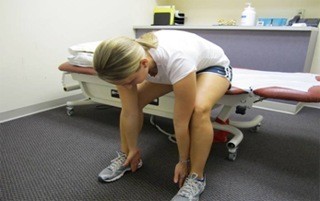Immediate Post-op Instructions
GUIDELINES AFTER HIP RESURFACING SURGERY
Congratulations on your new hip resurfacing! I am excited to guide you through your recovery as you begin to regain your active lifestyle. This document will attempt to help you through your recuperation with activity guidelines, as well as answer some of the most common questions that patients have after undergoing this procedure.
By the time you have left the hospital, you should be comfortable walking several hundred feet with the crutches, getting in/out of bed, and going up and down stairs. We will send a physical therapist to your house to help you with the walking and exercises, but many patients can do it on their own after 2-3 weeks. I would like you to continue walking with the 2 crutches for 3 weeks, and then try out walking with 1 crutch or cane, placed on the opposite side of the resurfaced hip. If you had both hips resurfaced, you may need to use the 2 crutches for another week.
The early exercises for the resurfaced hip consist of the following, and should be done by performing 5 sets of 10 through the course of the day:
- Ankle pumps
- Quad sets (pressing the knee down)
- Gluteal squeezes
- Heel slides – this is the most difficult, and will take time to recover. Don’t be discouraged! Also, do not try to overdo this exercise, as it will inflame the tendons in the front of the hip joint
Later exercises should be done in the same fashion and include:
- Side raises (abduction) in a standing position and while lying on your side
- Hip extensions (moving the hip backwards) in a standing position
- Limited straight leg raises (do not do this with any weights)
I recommend that you walk as much as your feel comfortable (at least 2-3 times a day), trying to walk a little further each time. You may walk inside or outside as you feel comfortable. As a rough guideline, patients can walk up to 1 mile at a time, by 2 weeks after surgery. My best advice to you during your recovery is to listen to your body – that is, if you feel pain during an exercise or afterwards, you have probably overdone it. I do not want you to carry anything heavy (> 20 lbs) or walk more than 5 miles until I see you again.
I also recommend that you ride a stationary bicycle without any resistance, as soon as you can comfortably get on the bicycle. This will help your hip motion. After 2 ½ weeks, if the incision is clean and dry, you may begin to swim. The frog kick (breaststroke) is a particularly good exercise for regaining hip motion.
You do NOT have any hip precautions to follow. Many therapists question this, but it is my protocol for resurfacing. I want you to begin to use the hip through daily activities to help you regain your motion. You may begin gentle stretches such as reaching down to your feet and crossing your legs when you feel comfortable.
You may begin some early stretching exercises when you feel ready. I would like you to be able to reach your feet by the time of your first post-operative visit.
Here are 2 exercises:
Dangle:

Dangle is a simple exercise to help increase flexion.
Find a stool or lower chair. Place your knees at shoulder width. Bring your hands down towards your ankles and hold when you feel the stretch. Don’t bounce or continue if you have a lot of pain. Repeat for a set of 10
Figure 4 crossing of legs:
 This exercise is designed to increase the rotation in your hip joint, particularly so that you can put on your own shoes and socks.
This exercise is designed to increase the rotation in your hip joint, particularly so that you can put on your own shoes and socks.
In a sitting position, gently grab your operated foot and bring it to rest on your unoperated knee. This will bring you into a sitting, cross-legged position. It will be difficult at first, and you may feel some pain around the incision site. If it is too stiff to accomplish this early on, you may turn your body at an angle to the chair/bed, and bring the foot onto the chair/bed instead of your opposite knee. Gently press on your operated leg to flatten it.
Please call my office to make a followup appointment at 1 month post-operative to see one of my physician assistants. We will obtain x-rays of your new hip and go over the plan to continue making progress. Please feel free to contact me with any questions; I like to hear how my patients are doing.
For frequently asked questions please click here.





